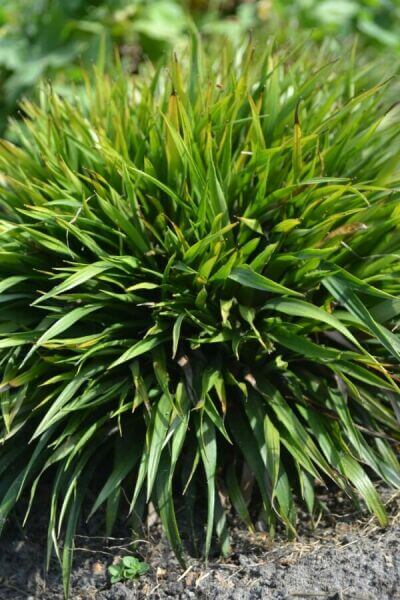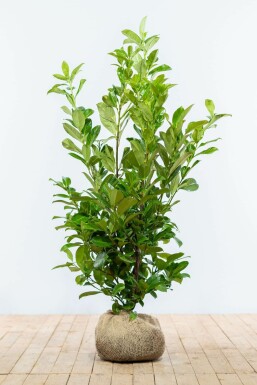Best Hedging Plants For Garden Layout
Best Hedging Plants For Garden Layout
Blog Article
Hedge Plants For Noise Buffering
Boost your garden's appeal with lush hedge varieties such as Yew (Taxus), Thuja, Laurel, Photinia, and Bamboo, commemorated for their structural integrity and environmental advantages.
Yew and Thuja provide evergreen protection and winter season durability, while Laurel offers rapid growth and broad, aromatic leaves.
Photinia includes seasonal charm with its lively red foliage, and Bamboo provides a low-maintenance, peaceful ambiance.
These hedges enhance air quality, lower noise, and develop tranquil, private areas.
Appropriate planting, spacing, and maintenance make sure vigorous growth and eco-friendly harmony.
Explore how these lavish ranges can elevate your garden's appeal and well-being.
Key Takeaways
Transform Your Garden With Lush Hedge Varieties
- Select Yew for its dense, evergreen development and exceptional durability.
- Choose Laurel for its quick growth and broad leaves, guaranteeing fast privacy.
- Select Photinia for its dynamic seasonal foliage, which turns a striking dark red.
- Use Bamboo for a low-maintenance, winter-hardy hedge with visual appeal.
- Area plants 2-3 per meter and prune frequently for optimal development and health.
Popular Hedge Plants
When changing a garden with lavish hedge varieties, it's important to consider popular hedge plants such as Yew, Thuja, Laurel, and Photinia due to their special qualities and advantages.
Yew (Taxus) is extremely esteemed for its durability and dense, green growth, making it a prime choice for withstanding landscapes.
Thuja is noted for its evergreen foliage and robust winter season durability.
Photinia adds seasonal vibrancy with red leaves that darken gradually, developing vibrant visual appeal.
Laurel provides fast growth and fragrant, broad leaves, suitable for quick privacy.
Additionally, Bamboo is an outstanding choice for ambiance, using a low-maintenance, winter-hardy alternative that improves the garden's aesthetic with its sophisticated, swaying walking canes.
These choices accommodate a variety of horticultural needs and preferences.
Benefits of Garden Hedges
Garden hedges offer a wide variety of benefits, making them an important addition to any landscape. These natural barriers are economical to execute and supply considerable wind security, enhancing air blood circulation and contributing to noise decrease. The thick foliage of hedges like Thuja and Beech guarantees personal privacy by blocking visibility, developing a tranquil and secluded environment.
Hedges likewise play a vital role in microclimate policy, supplying a stable environment that promotes plant development and lessens temperature changes. Their intricate leaf structures filter contaminants, enhancing air quality and contributing to a healthier garden environment.
Moreover, hedges master noise decrease, absorbing and deflecting sound waves to lower ambient noise levels. This dual functionality of providing both visual and acoustic personal privacy improves the overall harmony and visual appeal of any garden.
Planting and Upkeep Tips
For a successful hedge, precise preparation of the planting location is essential. Guarantee the soil has correct pH and drainage to support strong root development.
Space the plants properly for the picked species. Water the hedge often during its initial development stage, adjusting as required with seasonal changes.
Execute a organized bug control and disease prevention strategy, using natural or chemical treatments when necessary. Regularly check for aphids, termites, and fungal infections.
Apply mulch to maintain wetness and reduce weeds. Seasonal pruning promotes thick development and air blood circulation, necessary for plant health.
Following these standards will assist you cultivate a lively, well-maintained hedge that enhances the charm of your garden.
Spacing and Cutting Guidelines
Spacing and Trimming Guidelines
Correct spacing and cutting are important for cultivating healthy, visually appealing hedges. Appropriate spacing makes sure each plant gets adequate nutrients, light, and airflow.
Follow these guidelines for optimal hedge upkeep:
- Spacing: Position hedge plants 2-3 plants per meter to motivate robust growth.
- Pruning Strategies: Routine pruning is vital for preserving desired hedge height and shape. Cut brand-new growth in summer season and cut back older wood during winter.
- Seasonal Care: Change trimming methods and schedules according to seasonal requirements to ensure plant health.
- Hedge Height: Regularly screen and trim to keep the desired hedge height and attain uniform visual appeals.
Sticking to these steps will ensure your hedge prospers, improving both the appeal and functionality of your garden.
Selecting the Right Hedge
Picking the Right Hedge
Picking the appropriate hedge involves examining factors such as fully grown height, foliage density, and ecological durability. Successful hedge plant selection requires understanding each types' growth characteristics and site-specific adaptability.
For example, Yew (Taxus) offers excellent durability and dense development, while Thuja is noteworthy for its winter strength. Furthermore, considering upkeep requirements is vital; fast-growing types like Laurel or Privet demand routine trimming, whereas low-maintenance alternatives like Bamboo or Ivy might be preferable for those seeking very little upkeep.
Environmental aspects such as soil type, light accessibility, and moisture conditions must also direct the choice process. This cautious approach makes sure the chosen hedges will prosper, providing both visual and practical advantages to the garden landscape.
Delivery and Planting Advice
To ensure your hedge plants grow, they should be delivered by specialized carriers and planted promptly upon arrival.
Follow these vital actions for successful planting:
- Soil Preparation: Enhance the soil with natural matter to enhance drainage and nutrient content.
- Planting Depth: Produce a trench two times the width and equal to the depth of the root ball.
- Watering Methods: Water completely after planting, keeping the soil consistently moist but not saturated.
- Mulching: Apply a layer of mulch to retain wetness and reduce weeds.
Customer Support and Service
Provided the vital role of timely help in horticultural pursuits, our customer support team is readily available 6 days a week through telephone, e-mail, and social media to offer professional recommendations and promptly resolve any concerns. Their commitment to fast action times makes sure consumer satisfaction by resolving queries associated with plant health, ideal planting techniques, and maintenance schedules.

-------------------
Within 24 hours
This extensive support group, reinforced by an outstanding 9.3/ 10 client score, highlights our dedication to boosting the gardening experience for every single customer.
Frequently Asked Questions
How Long Does It Take for Hedge Plants to Develop?
Hedge plants generally require one to three years to become fully established, with the specific duration varying by species and growing conditions.
Effective care throughout this vital duration is necessary for robust development. Constant watering, vigilant weed control, and appropriate fertilizer application are critical in promoting strong root development.
For instance, fast-growing types like Laurel might develop more rapidly, while slower-growing ranges such as Yew might take longer. Persistent maintenance accelerates the establishment procedure, leading to thick and healthy hedges.
What Are the very best Hedge Plants for Privacy?
The concern of the very best hedge plants for personal privacy involves evaluating evergreen and deciduous options.
Evergreen hedges like Thuja, Laurel, and Cypress supply year-round protection, guaranteeing continuous personal privacy.
On the other hand, deciduous hedges such as Beech provide seasonal privacy, shedding leaves in cooler months.
Key upkeep ideas for privacy hedges include routine trimming, fertilizing in spring, and proper spacing-- normally 2 to 3 plants per meter.
Furthermore, consistent watering and thorough weed removal are crucial for promoting healthy, thick growth.
Can Hedge Plants Bring In Wildlife to My Garden?
Yes, hedge plants can draw here in wildlife to your garden by providing vital benefits like shelter, food, and nesting websites, thus boosting local biodiversity. For example, yew, holly, and laurel are exceptional for attracting birds, while ivy supports a range of insects.
However, it is very important to keep in mind that there are some drawbacks, such as increased maintenance to handle pests and routine maintenance. Carefully picking and maintaining hedge ranges can assist balance these disadvantages and advantages, ultimately promoting a lively and sustainable environment in your garden.
Exist Any Flowering Hedge Plants Available?
Yes, there are flowering hedge plants readily available that can enhance the beauty of your garden.
For instance, Elaeagnus, likewise known as Olive Willow, produces fragrant white flowers in the fall, including a touch of elegance.
Photinia, another popular choice, showcases dynamic red leaves that grow into a rich green, creating a dynamic visual result throughout the seasons.
To make sure these plants thrive, it's vital to practice correct pruning strategies and seasonal maintenance, such as trimming new growth in the summertime and cutting down in the winter season.
These steps will assist keep the health and visual appeal of your flowering hedges.
How Do I Prevent Pests in My Hedge Plants?
To prevent pests in hedge plants, employ natural insect control techniques and preserve appropriate hedge care. Present helpful pests like ladybugs, which victimize damaging bugs, to develop a well balanced environment.
Frequently check your hedges for indications of problem and without delay eliminate any affected parts to prevent the spread. Ensure the health of your hedges by applying balanced fertilizers and supplying appropriate water.
Make use of mulching to keep soil moisture and proper spacing to decrease plant stress and promote robust development. These practices jointly help in reducing pest issues and keeping a healthy hedge.
Conclusion
In essence, picking the best hedge varieties such as Yew, Thuja, and Laurel can transform any garden into a serene sanctuary. These plants offer year-round greenery, boost visual appeal, and offer practical advantages like noise reduction and wind defense.
Appropriate planting techniques, precise spacing, consistent watering, and seasonal trimming are essential for ideal growth.
Reputable delivery services and skilled client support make sure a seamless experience from purchase to planting, making it easier than ever to elevate your outside area.
Garden hedges offer a plethora of benefits, making them an important addition to any landscape. These natural barriers are economical to implement and provide substantial wind protection, improving air circulation and contributing to sound reduction. The thick foliage of hedges like Thuja and Beech ensures personal privacy by obstructing presence, producing a remote and peaceful environment.

Pruning Strategies: Routine pruning is important for keeping preferred hedge height and shape. Cut brand-new development in summer and cut back older wood throughout winter season.
Report this page